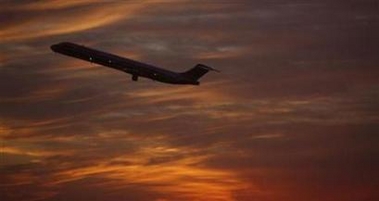High altitude flights spark symptoms: Study
(Reuters)Updated: 2007-07-05 10:59
BOSTON - Feeling a little achy, lightheaded or short of breath on a long plane flight? A new study suggests you might be suffering from a mild form of altitude sickness.
Researchers report that true altitude sickness - with its nausea, vomiting and sleep disturbances - was no more likely in volunteers in simulated airplane cabins where the pressure was equivalent to 8,000 feet above sea level than it was when the pressure was closer to sea level.
But after three hours of exposure to cabin pressures equivalent to 7,000 to 8,000 feet, the simulated fliers were more likely than others to report backaches, headaches, shortness of breath, light-headedness and impaired coordination.
Women and younger people were the most likely to experience symptoms, the researchers report in the New England Journal of Medicine.
"On the basis of our findings, we conclude that maintaining a cabin altitude of 6,000 feet or lower (equivalent to a barometric pressure of 609 mm Hg or higher) on long-duration commercial flights will reduce the discomfort among passengers," wrote Michael Muhm and colleagues at the Boeing Company, which financed the study.
Just over 500 people volunteered for the study. They were placed, up to a dozen people at a time, in a pressure chamber, in coach seats, for 20 hours.
They were even given airline food. No alcohol was allowed, but they could watch five movies in the pressure chamber.
Most aircraft are designed to have cabin pressures no lower than what is found at 8,000 feet above sea level, even as the plane flies much higher.
Flying at lower altitudes makes the cabin pressure higher, but that also requires more fuel and makes the aluminum planes wear out faster.
Typically the pressure in the cabin is equivalent to 5,500 to 7,500 feet above sea level and designing an aircraft to withstand a cabin pressure equivalent to a lower altitude would add to the cost of the plane.
Jeanne Yu, Boeing's director of environmental performance, said the Muhm study prompted the company to set the cabin pressure on its new 787 planes, to be rolled out next week, for 6,000 feet.
That is possible in these planes, she said, because the fuselage is made up of a composite structure instead of aluminum.
|
|
|
||
|
||
|
|

